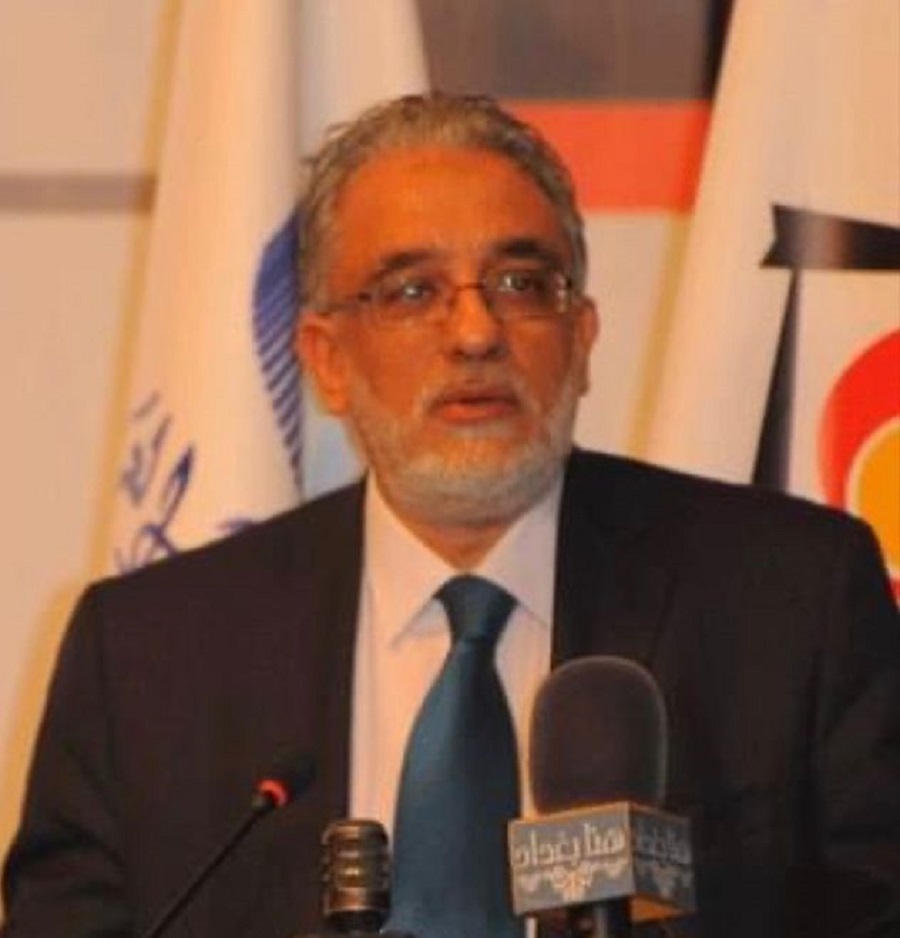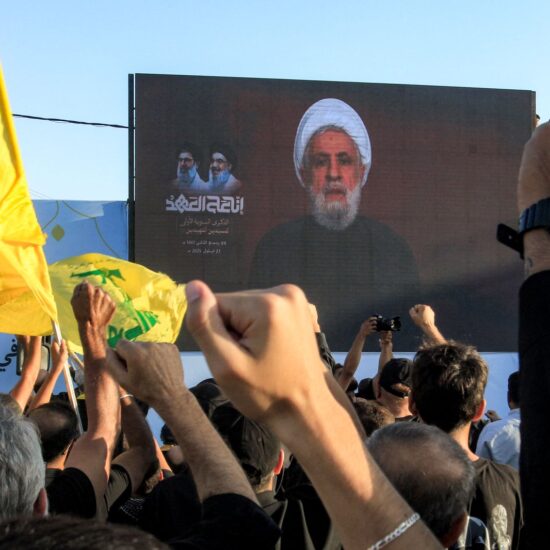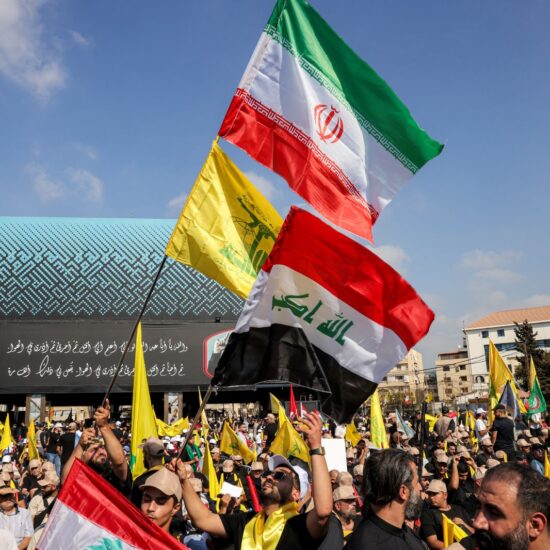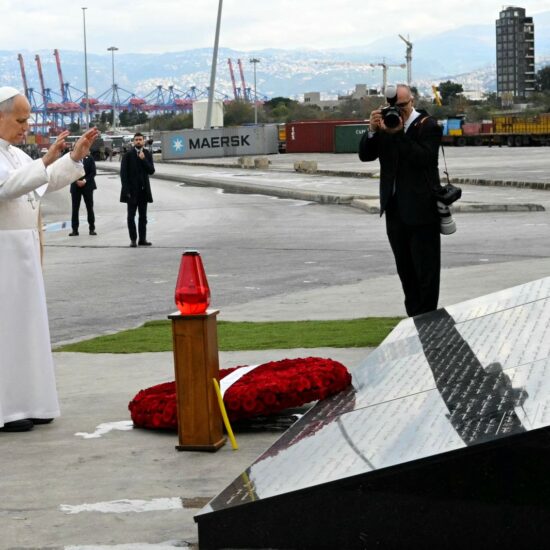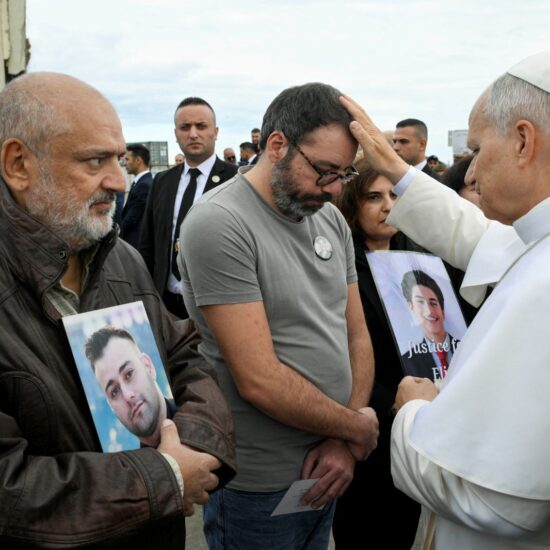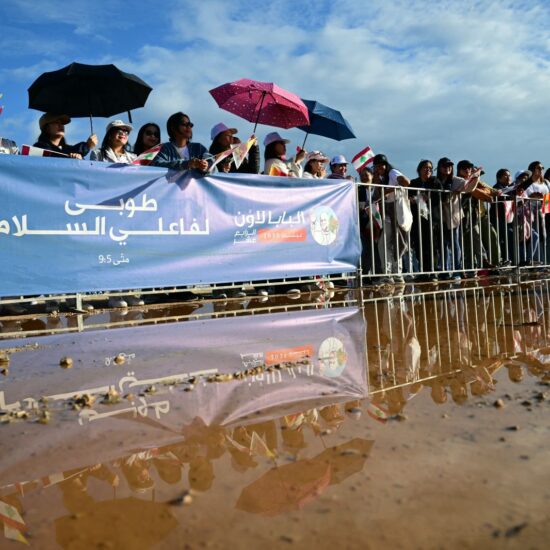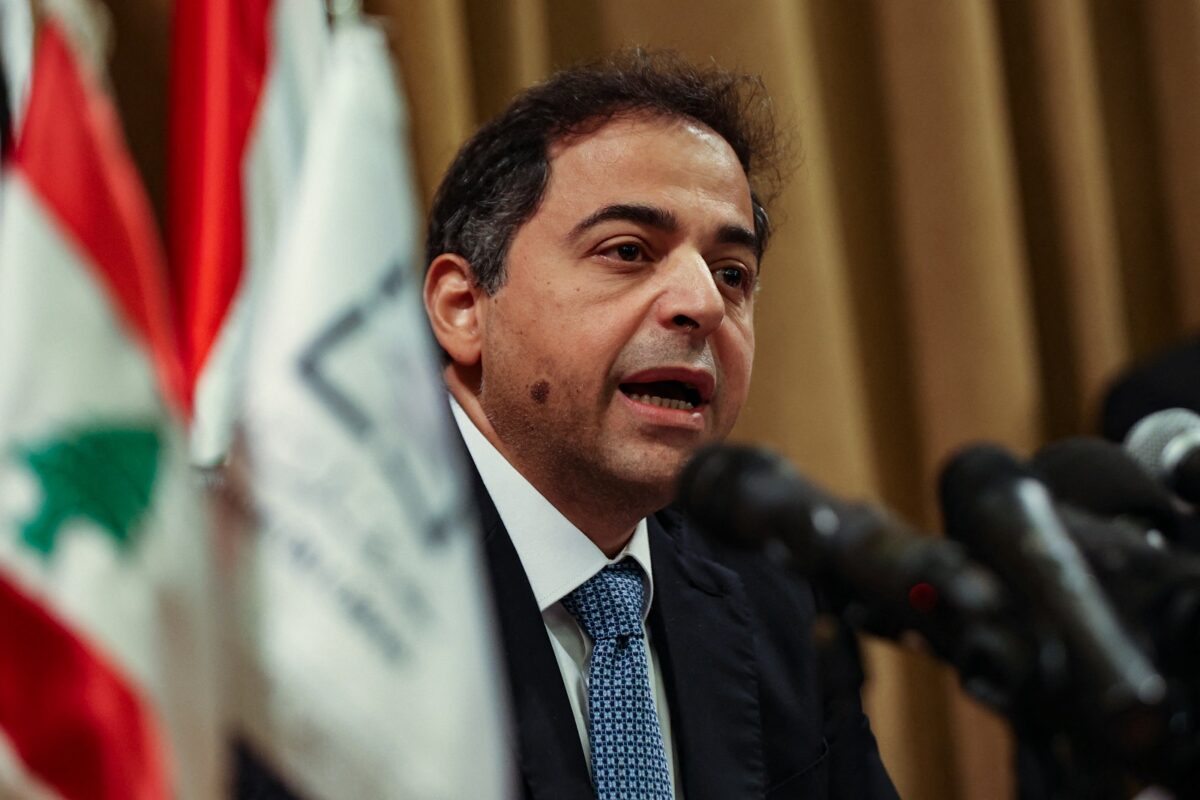
Conflicting signals are being sent by the Central Bank of Lebanon (BDL)’s acting governor, Wissam Mansouri, on the role of the BDL in solving the current monetary situation and the debacle of bank depositors, as well as the role of the BDL in its understanding of the Code of Money and Credit (CMC), which was promulgated as decree n°13513 of 8/1/1963: This law is the main regulation of the banking and financial system. Mansouri was appointed as the first vice-governor of the Central Bank in June 2020 alongside three other vice-governors, who sit on the Bank’s Central Committee. CMC covers the regulation of money, the BDL’s role and functions, the banks’ activities, and those of the professions linked up to the banking sector.
Where is the Currency Stability Fund?
To start with, Article 229 CMC had adopted the free market rate as the legal rate of the lira. The system established under the CMC was able to endure several decades until BDL decided towards the end of 1997 to adopt a fixed exchange rate for the Lebanese lira against the dollar, and this was termed the “official rate” of the Lebanese lira.
As such, Mansouri sees his prerogatives to stabilize the exchange rate of the lira as overstepping the limits set out in the Law in its decision of 1997. Those are determined in Article 75(1) CMC, which states that “the Bank resorts to the means it deems necessary to ensure the currency’s stability. To that end, it may particularly intervene in the market in agreement with the Minister of Finance to buy or sell gold and foreign currencies without prejudice to the provisions of Article 69.” Article 75(2) continues stating that “the operations of the Bank concerning foreign currencies are recorded in a special account called the ‘Currency Stability Fund’.” As such, the assets of the Currency Stability Fund form the reserves for ensuring the stability of the currency. This action, however, has never seen the light.
The current BDL practice still accepts the controversial version that the US dollar deposits of the banks held with it are a part of its reserves for ensuring the stability of the currency, and which it has the right to use to uphold the official exchange rate, whereas the “reserves for ensuring the stability of the currency” are composed by law of the foreign currencies and the gold reserves owned by the Central Bank, as reserves of the State or of the Central Bank in foreign currencies held at the International Monetary Fund (IMF) and of the Drawing Rights on the IMF.
By accepting long-term deposits, the Central Bank has joined the banks in violating the provisions of Article 156 of the CMC, which requires the banks “to respect in their use of the money that they receive from the people the rules that ensure the preservation of the people’s rights.” In particular, they have to reconcile the duration of the investment with the nature of their resources, experts say.
Depositors’ money quagmire
By consulting the CMC, particularly Article 88 and the articles that follow, it becomes clear that, except “credit facilities that do not exceed 10 percent of the average of the revenue in the ordinary budget of the State over the last three closed financial years,” “the principle is that the Central Bank does not grant loans to the public sector,” as provided for in Article 90 CMC. Mansouri’s understanding of this is also distorted as it requires a law to do that.
Articles 41 to 46 inclusive CMC provide for the creation of a Government Commissariat to the Central Bank at the Ministry of Finance. According to Decree No. 16400 of 22 May 1964 and its amendments, the Commissariat is composed of a Council, a Monitoring and Supervision Department, and a Research Department on matters related to money and credit. This Commissariat is assigned the mission of overseeing that the CMC is implemented, monitoring the accounts of the Central Bank, and ensuring that the Bank respects the provisions of the CMC. It should also ensure that the Bank keeps a sufficient amount of gold and foreign currency among its assets whose percentage should not be less than the percentage required by Article 69 CMC.
Had the Commissariat been effectively present and active, had it not been transferred in such a dubious manner from the Ministry of Finance to the Central Bank itself (in such a way that its members now earn their salaries from the Central Bank) and had its members been well-qualified, the Government would not have needed today to resort to a financial and legal audit company.
Whose responsibility?
The statement from the Central Bank of Lebanon, titled “I am not responsible for what is due to me, and the negligence is from them,” has been leading with propaganda for eight months. Its latest release, at the beginning of this month, criticized the “legislative, executive, and judicial authorities as well as the media’s deviation,” Toufic Chambour, Former head of the International department, told NOWLEBANON.
According to him, Mansouri is explicitly ignoring the duty of the BDL to pursue violations through the Public Prosecution before the criminal courts, in accordance with urgent procedures. He added that “on the other hand, Article 26 stipulates that the governor – and certainly his acting counterpart – is the one authorized to initiate all legal actions on behalf of the Central Bank of Lebanon and to take all executive or precautionary measures as deemed necessary. However, despite all the serious violations, there has been no claim registered by Mansouri, since assuming the governorship at the beginning of last August.”
Violations of Circular 166
According to Chambour, circular 166 is based on Article 174 of the Monetary and Credit Law, which requires the Central Bank of Lebanon to establish necessary general regulations to ensure good relations between banks and their depositors and clients. The content of these necessary general regulations was defined by the justifications of the Monetary and Credit Law, “such as establishing a general law for conduct that defines general rules for governance, without the Central Bank’s instructions intervening in the management of banks’ operations but rather preserving their full freedom in operation.” However, this was not adhered to in the details outlined in the six pages of Circular 166, which delved into specifics.
Regarding the good relationship between the bank and its depositors, the explanations of the justifications of the Monetary and Credit Law defined it as “the depositor should be able to retrieve their deposit as if they were withdrawing it from their own account.” This violates circular 166, which specified a monthly withdrawal limit of 150 US dollars, in addition to its potential to cause disputes between depositors with dollars and depositors with Lebanese pounds on one side, and between depositors with time deposits and those with current deposits on the other.
The circular mentions that the listed individuals who have not returned the requested transfers and have frozen them for five years are not benefiting from its provisions for example it mentions that customers who transferred more than five hundred thousand dollars or its equivalent in foreign currencies abroad during the period from July 1, 2017, to the date of Circular 154 issued on August 25, 2020, must deposit in a frozen account an amount equivalent to 15% of the transferred amounts for a period of five years, with the concerned bank exempted from mandatory employment in foreign currencies at the Central Bank of Lebanon.
According to Chambour, Article 337 of the Commercial Law considers a trader fraudulent when engaging in arbitrary transfers that harm all creditors after declaring the cessation of payments (either fully or partially). However, Circular 166 legalized the aforementioned actions and included operations that violate the law and are punishable. Also, the condition of freezing returned amounts for five years makes it impossible to benefit from Circular 166, which stipulated six months and was associated with the condition that the freezing period of the account must end.
Circular 166 explicitly exempts banks from forming mandatory reserves for those who have repatriated part of their funds transferred abroad from clients, insiders, major shareholders, and bank managers, as mentioned above. However, without any logic, it allows them to participate in the mandatory employment alongside the direct rights holders of these occupations, who are the owners of dollar deposits before October 2019. The same question is raised about justifying the participation in these mandatory reserves for individuals who allowed the bank to convert their accounts from Lebanese liras to dollars (or lollars effectively) after October 2019. This is because the bank refused to repay dollar depositors before this date, citing a lack of available dollars.
BDL reduced the monthly withdrawals for dollar depositors from 400 to 300 dollars under Circular 158 without any explanation or justification for its action. Now, Circular 166 has decided to pay the deducted amount, which is 100 dollars, from the original limit set for beneficiaries of Circular 166, which is 150 dollars. Strangely that should be done from the same source, which is the mandatory employment that banks paid to the Central Bank of Lebanon from the deposits of those concerned with Circular 158.
Violations of Circular 167
The BDL issued two important circulars on February 2nd, 2024. Circular 167 mandates banks to use a new exchange rate, announced on BDL’s platform, for valuing their dollar-denominated assets and liabilities when preparing financial statements. This comes into effect retroactively from January 31st, 2024, and precedes decisions regarding bank deposits at BDL and capital control laws.
Circular 166 replaces the previous Circular 151 and allows certain holders of USD accounts opened after October 31st, 2019, to withdraw 150 dollars per month. This program has limitations, excluding accounts that have received large withdrawals, conversions from Lebanese liras to US dollars, loan payments, or Sayrafa platform benefits exceeding specific thresholds. The cost of this program, estimated to exceed 300 million dollars annually, will be shared by banks and is initially effective until June 30, 2024, with a possibility of renewal. Controversially, the exchange rate offered by BDL to banks remains around 15,000 liras per dollar.
The Central Bank of Lebanon is proposing a solution to the deposit crisis based on Article 113 of the Banking Law, which involves distributing profits between the central bank’s reserves and the treasury, potentially burdening future generations with significant financial responsibilities. Experts believe that relying on this article to solve the deposit problem would transfer the responsibility of paying off 60 to 70 billion dollars to future generations over at least 50 years while exempting banks and the central bank from bearing these losses. Additionally, former Central Bank Governor Riad Salameh allegedly concealed these losses for 30 years, violating the Banking Law’s disclosure requirements.
There’s concern that acting Governor Mansouri’s proposal could perpetuate the system’s flaws by shifting these losses onto the state without parliamentary oversight, as mandated by the law. Legal analysis of Article 113 suggests that its purpose was to regulate financial institutions within the state legally, a goal not achieved over the past 30 years due to mismanagement.
Cooperation with judiciary
The BDL statement clarifies that it has close cooperation with judicial authorities regarding operations conducted with the alleged fraudulent “Optimum Invest” between 2015 and 2018, aiming to reveal the full facts.
Also according to Article 117 of the Banking Law, the Central Bank governor is required to submit an annual report on the bank’s operations, which has been neglected by all governors. If the report had been submitted, it should have addressed the special relationship between the Central Bank and Optimum Invest along with the legal framework governing this relationship, to satisfy public inquiries and the right to know the truth from the relevant administrative authority.
It is noted that the alleged 8 billion dollars in profits from Optimum Invest operations with the Central Bank were actually the volume of operations. NOWLEBANON has learned that the contract between them was approved by the Central Council and the legal department of the Central Bank.
Explanations provided by the Central Bank of Lebanon and its scattered legal analyses discussed several key points, namely on transparency and Disclosure. It is to be noted that the Central Bank of Lebanon did not adequately disclose the details of its relationship with Optimum Invest reflecting a deficiency in the transparency requirements expected of modern financial institutions.
Also to be highlighted is the lack of annual reports from the Central Bank of Lebanon for a long period, which should include its relationship with companies like Optimum Invest, raising questions about its operations and the legal frameworks that govern them.
One cannot help but wonder about the repetition of loans and financing operations for Optimum Invest without considering financial law requirements, indicating the possibility of clear legal violations. These points reflect a direction towards a thorough examination of the financial and legal relationships between the Central Bank of Lebanon and companies like Optimum Invest, and determining their compliance with the required legal and ethical standards.
According to Chambour, it would have been beneficial for Mansouri to also initiate the necessary legal actions against those who made the decision to support or establish it, and also those who did not object to it.
It is worth mentioning here that the acting governor and his colleagues wrote to the Cabinet on February 15, 2022, through the former governor and the current Minister of Finance, informing him of the deviations of the former in spending from mandatory employment in foreign currencies at the Central Bank of Lebanon and from special withdrawal rights, contrary to the law and the Central Council’s resolutions preventing that. What’s strange today is Mansouri’s reluctance to launch the required legal actions against all those involved in the matter regardless of their position under Article 206 of the Monetary and Credit Law. He had previously signed an acknowledgment that spending on support is against the law but has failed from the other side to fulfill what is required of him regarding this serious violation.
Officials had previously requested former Governor Dr. Riad Salameh to secure similar support for electricity, which he refused despite the availability of sufficient resources at the time, stipulating that such requests must come in writing with a clear indication ‘with insistence and confirmation,’ or issuing a law granting explicit and specific immunity to the governorate regarding meeting such requests. The matter was refused, and eventually, the option of providing financing as a loan was adopted and presented to the Parliament for approval. Salameh insisted that in implementing the loan, no installment should be disbursed before submitting all documented proof of the proper expenditure of the previous installment, to prevent any distortions or deviations like those that occurred with the support operations funded by the Central Bank of Lebanon in previous years before the crisis erupted.
Losses quiproquo
In summary, Mansouri’s proposal to handle the deposit crisis raises significant legal and ethical concerns regarding accountability and the equitable distribution of financial burdens between banks, the central bank, and the state.
The CMC further emphasizes that dealing with these losses cannot rely solely on Article 113 but must consider other articles in the Banking Law and the Lebanese Constitution, especially Article 117. This is because the losses have accumulated over many years without disclosure, attributed to mismanagement by politicians and banks in a secretive manner.
The absence of laws legitimizing these actions, such as through treasury bonds or Eurobonds, absolves the state of responsibility for these losses. The proposal to shift these losses onto the state is seen as part of a plan to seize its assets, especially as it lacks legal backing and is championed by suspicious individuals who have committed crimes. The application of Article 113 should be based on transparency and adherence to regulatory standards, not on attempts to shift responsibility to the state to protect banks. It is highlighted that the lack of clear numbers and hidden information raises doubts about the legitimacy of these losses and the motives behind attributing them to the state.
Where do we go from here?
It is still to be seen what BDL’s official stance is on the fact that banks committed violations by employing 75 percent of deposits in issuing Treasury bills and deposits with the Central Bank of Lebanon, which fall outside the activities of medium and long-term lending banks. They violated rules prohibiting commercial banks from exceeding direct and indirect credits to a single person by 30 percent of the bank’s own funds and they violated precautionary rules requiring the bank to align deposit and loan terms and to maintain high liquidity ratios when dealing with foreign currency deposits.
Will Mansouri take action against those who participated in financial engineering violations and benefited from accepting repayments of loans and borrowings granted in dollars based on an exchange rate of only 1500 Lebanese liras per dollar?
On all accounts, it seems that the theft of Lebanese deposits requires an international court, not an international monetary fund.
They did not implement the basic circular 154 to increase liquidity and solvency ratios, which contributed to transferring funds abroad for insiders and engaged in property ownership with politicians and conflicts of interest.
Maan Barazy is an economist and founder and president of the National Council of Entrepreneurship and Innovation. He tweets @maanbarazy.
The views in this story reflect those of the author alone and do not necessarily reflect the beliefs of NOW.


